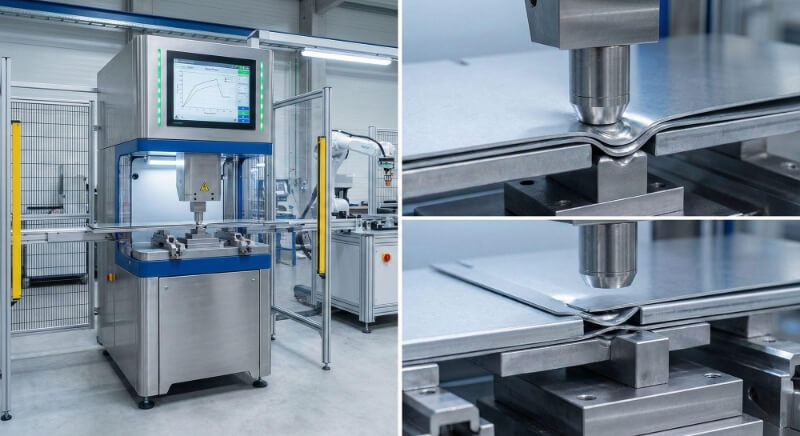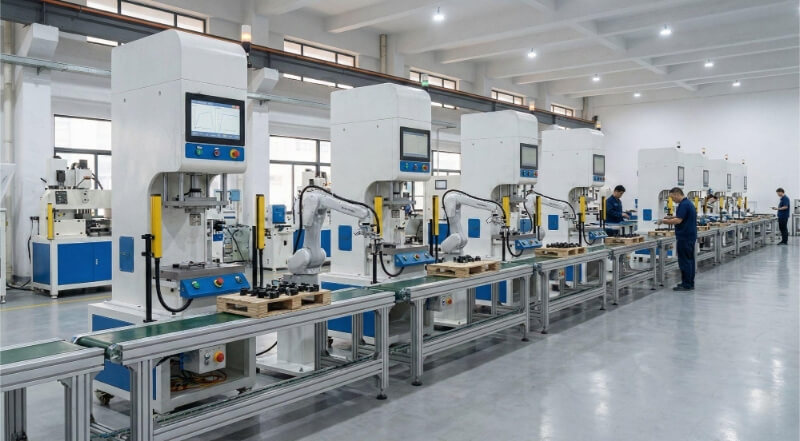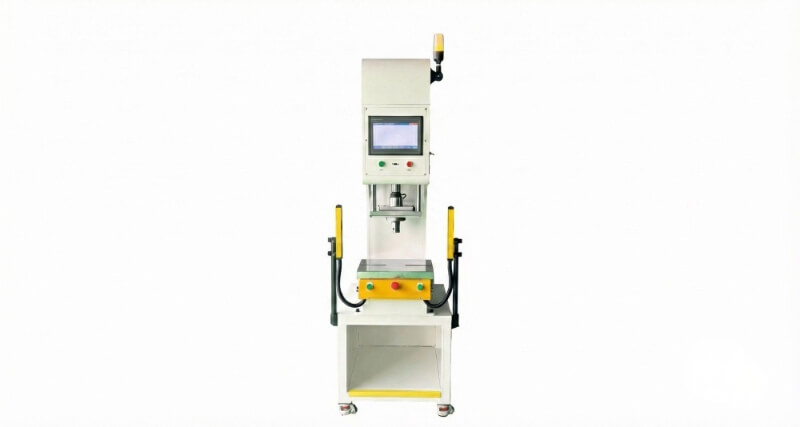Many manufacturers face the challenge of cutting sheet metal accurately and efficiently. Parts can be poorly finished without the right techniques, leading to extra time, labor, and cost. Sheet metal shearing solves this issue by offering a precise and cost-effective cutting method for various types of sheet metal.
Want to know how blade alignment or material thickness impacts your results? Let’s break down the mechanics, benefits, and best practices.
What is Sheet Metal Shearing?
Sheet metal shearing involves cutting flat metal sheets into smaller pieces using two blades. The upper blade applies force to the material, pressing it against the lower blade to create a clean, straight cut. This process doesn’t involve heat, making it ideal for maintaining material integrity.
How Shearing Works?
Curious about the mechanics behind this process? Let’s break it down step by step.
- Blade Setup: The upper blade is positioned at a slight angle (2–3 degrees) to reduce the force required for cutting.
- Material Clamping: The sheet metal is firmly held to prevent shifting during the cut.
- Cutting Action: The upper blade descends, applying pressure to fracture the metal along the intended line.
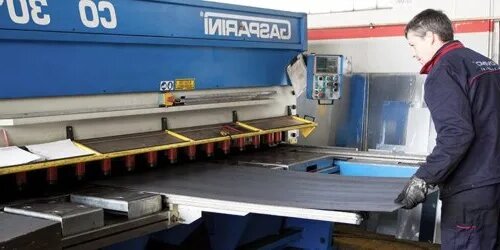
Essential Shearing Techniques
Shearing techniques are key in sheet metal fabrication. Let’s explore the most common methods for precise, efficient cuts.
Guillotine Shearing
Guillotine shearing is one of the most common methods for cutting sheet metal. It uses a straight blade that moves vertically to slice through the material. This technique is perfect for creating long, straight cuts with high precision.
Rotary Shearing
Rotary shearing employs two rotating circular blades to cut sheet metal. This method is ideal for curved or circular cuts, making it versatile for custom shapes. It’s often used in applications like creating metal rings or trimming edges on curved components.
Punch and Die Shearing
Punch and die shearing uses a punch to force the metal into a die, creating a cut. This technique is highly accurate and suitable for repetitive reductions of high-volume production.
Nibbling
Nibbling is a process where a small punch removes tiny pieces of metal in overlapping cuts. This method is excellent for creating complex shapes or irregular edges without custom tooling.
Sheet Metal Shearing Materials
Sheet metal shearing works with various materials, offering unique properties for different applications. Here’s a breakdown of the most commonly used metals in shearing processes:
- Steel
- Stainless Steel
- Aluminum
- Copper
- Brass
- Titanium
Key Considerations When Shearing Materials:
- Thickness: Thicker materials require more force and sharper blades.
- Hardness: Harder metals like stainless steel or titanium demand durable blades and precise setups.
- Surface Finish: Some materials, like aluminum or brass, are prone to scratches, so proper handling is essential.
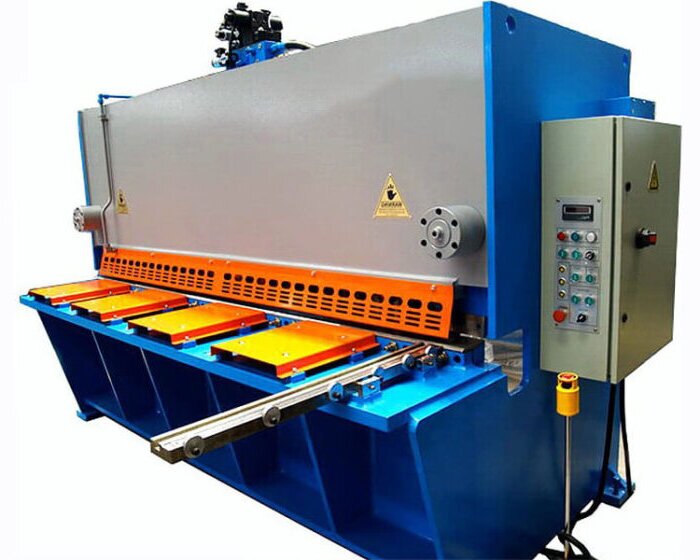
Sheet Metal Shearing: Benefits and Limitations
Sheet metal shearing offers several advantages, but it also has limitations. Understanding both can help you choose the right method for your project.
Benefits of Sheet Metal Shearing
- Precision: Shearing offers clean, straight cuts with minimal distortion, making it ideal for high-accuracy projects.
- Speed: The process is quick, especially for cutting large metal sheets into smaller, uniform pieces.
- Cost-Effective: Shearing requires less energy than other cutting methods, reducing operational costs.
- Minimal Material Waste: Shearing produces minimal scrap compared to other cutting methods, which helps save material costs.
Limitations of Sheet Metal Shearing
- Thickness Limitations: Shearing is not ideal for very thick metal sheets. The thicker the material, the more force is required, limiting the range of use.
- Burr Formation: Shearing can produce burrs along the edges of the cut metal, which may require additional finishing or deburring processes.
- Limited to Straight Cuts: While shearing excels at straight cuts, it’s unsuitable for intricate curves or detailed shapes.
- Edge Distortion: In some cases, the edges of the cut metal can become slightly distorted, requiring further adjustments or treatment.
Best Practices for Optimal Shearing Results
Achieving the best results in sheet metal shearing requires attention to detail and proper techniques. Following these best practices ensures precision, efficiency, and long-lasting results.
Choosing the Right Shear for the Job
When selecting a shear, it is important to consider the type of material and its thickness. Thicker materials require more powerful machines, while softer metals like aluminum can be sheared with less force.
Due to their speed and consistency, hydraulic shears or guillotines are often preferred for high-volume production. A mechanical shear may be more suitable for smaller, more intricate cuts.
Preventing Burrs and Edge Deformation
Burrs and edge deformation often occur due to incorrect shear settings, dull blades, or excessive cutting speed. Poorly aligned blades or the wrong shear type for a material’s thickness can also lead to poor cutting quality.
To prevent burrs, ensure the shear blades are sharp and properly aligned. Reducing cutting speed slightly can also minimize edge deformation and improve cut quality.
Maintenance and Blade Sharpening
RClean blades frequently to remove debris and prevent buildup. Lubricating the shear mechanism can also reduce friction and extend the blades’ life.
If you notice excessive burrs, edge deformation, or inconsistent cuts, it may be time to replace the blades. Dull blades can cause increased material stress and uneven cuts, producing poor product quality.
Industry Applications of Sheet Metal Shearing
Sheet metal shearing plays a critical role in various industries, enabling the production of precise, high-quality components. Let’s explore how this process is applied across key sectors.
Automotive Manufacturing
Shearing is used in the automotive industry to create body panels, brackets, and chassis components. The process ensures clean, straight cuts for parts that require tight tolerances and durability.
Construction and Structural Fabrication
Shearing is used in construction to cut steel beams, roofing panels, and framing components. This method also creates HVAC ductwork, staircases, and custom metal fixtures for buildings.
Aerospace and High-Precision Applications
Shearing fabricates lightweight yet strong components like aircraft skins, brackets, and engine parts in aerospace. High-precision shearing is also used to produce satellite components and specialized machinery.
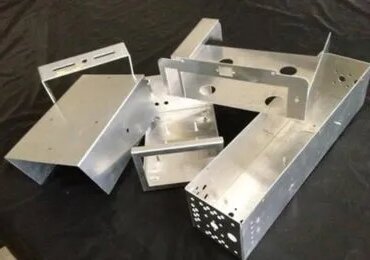
What is the Difference Between Shearing and Cutting?
While shearing and cutting are methods used to separate material into desired shapes or sizes, there are distinct differences in the processes and their applications.
- Method: Shearing uses two blades to apply a shear force while cutting can involve various techniques like sawing or using heat.
- Applications: Shearing is ideal for straight cuts in thin materials while cutting methods like laser and plasma can handle complex shapes and thicker materials.
- Precision: Shearing typically provides straight, clean cuts, whereas other cutting methods may produce varying edge quality depending on the material and technique used.
What is the Difference Between Shearing and Blanking?
Shearing and blanking are cutting processes that serve different purposes and produce different results.
- Purpose: Shearing is used to cut sheets into smaller sections, while blanking is used to cut specific shapes from larger sheets.
- End Result: Shearing produces trimmed sections, while blanking creates a finished part (the blank).
- Edge Quality: Blanking requires cleaner, more precise edges since the blank is the final part. Shearing may leave rougher edges that need finishing.
Conclusion
Sheet metal shearing is a versatile and efficient process for cutting metal into specific shapes or sizes. It offers numerous benefits, such as precision, speed, and cost-effectiveness, making it ideal for the automotive, construction, and aerospace industries. While shearing is perfect for straight cuts and high-volume production, understanding its limitations and best practices ensures the best results.
If you have any questions or need expert assistance with your sheet metal projects, don’t hesitate to contact us!
Hey, I'm Kevin Lee

For the past 10 years, I’ve been immersed in various forms of sheet metal fabrication, sharing cool insights here from my experiences across diverse workshops.
Get in touch

Kevin Lee
I have over ten years of professional experience in sheet metal fabrication, specializing in laser cutting, bending, welding, and surface treatment techniques. As the Technical Director at Shengen, I am committed to solving complex manufacturing challenges and driving innovation and quality in each project.

